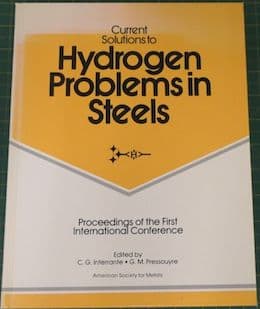
-----
Chrome plating leaf springs
1996
Q. I have been told that decorative chrome plating effects the quality of the material it is applied to. What does it do? and is there anyway that it can be reversed without effecting the quality of the finish. In particular I am wondering about plating automotive leaf springs and not changing their inherent properties.
Thanks in advance
(includes 7 papers / 34 pages on electroplating)

on eBay or Amazon
(affil link)
A. boing...boing...boing...CRACK!
The problem here, Bert, and it's a very big one, is hydrogen embrittlement. High strength steels (spring steels are high strength steels) will absorb hydrogen from such processes as pickling and plating -- especially chrome plating -- and become brittle like glass.
Often the hydrogen can be baked out; piston rings and landing gear, for example, are sometimes chrome plated. And I've seen chrome plated coils springs on motorcycles. Baking temperatures are low enough that they will not affect the spring properties, so, if you can get the hydrogen out, it can work.
But you must get the parts into an oven immediately after plating; you can't fix the problem later. And your leaf springs might break right in the chrome plating tank, before they even can get to an oven.
You can probably develop a chromium plating process for automotive springs but it may take a lot of trial and error, and I am confident that it will involve multiple hydrogen embrittlement relief steps. Good luck!

Ted Mooney, P.E.
Striving to live Aloha
finishing.com - Pine Beach, New Jersey
Ted is available for instant help
or longer-term assistance.
Q, A, or Comment on THIS thread -or- Start a NEW Thread